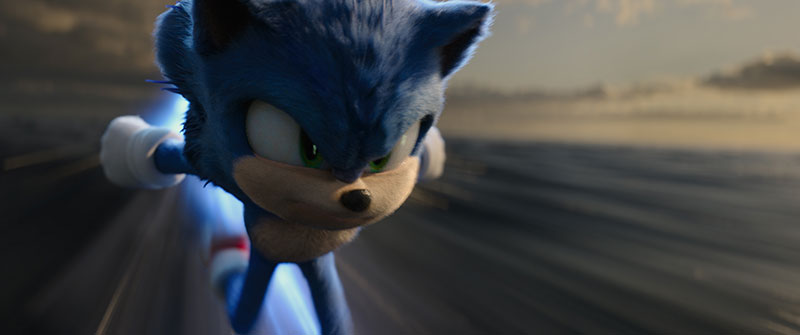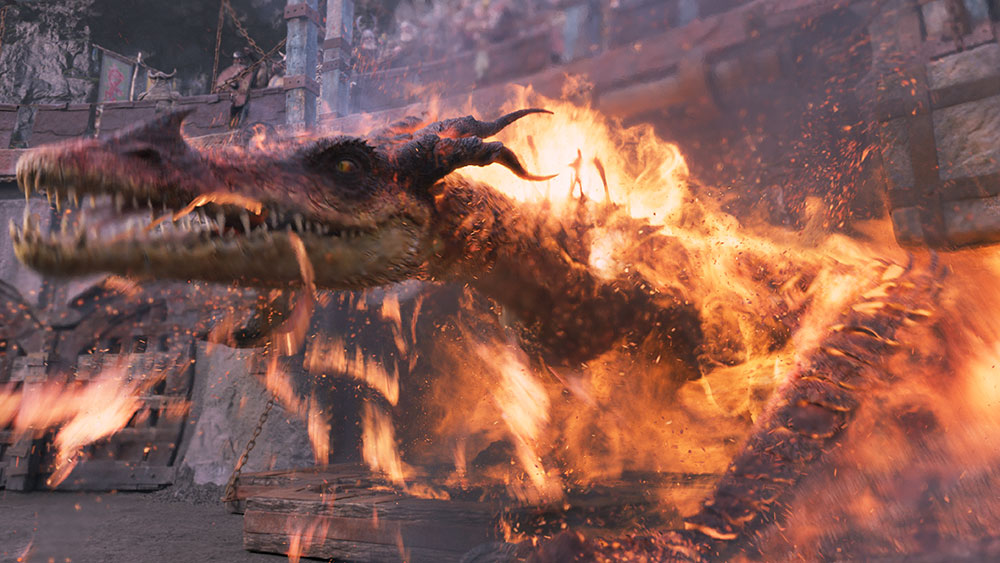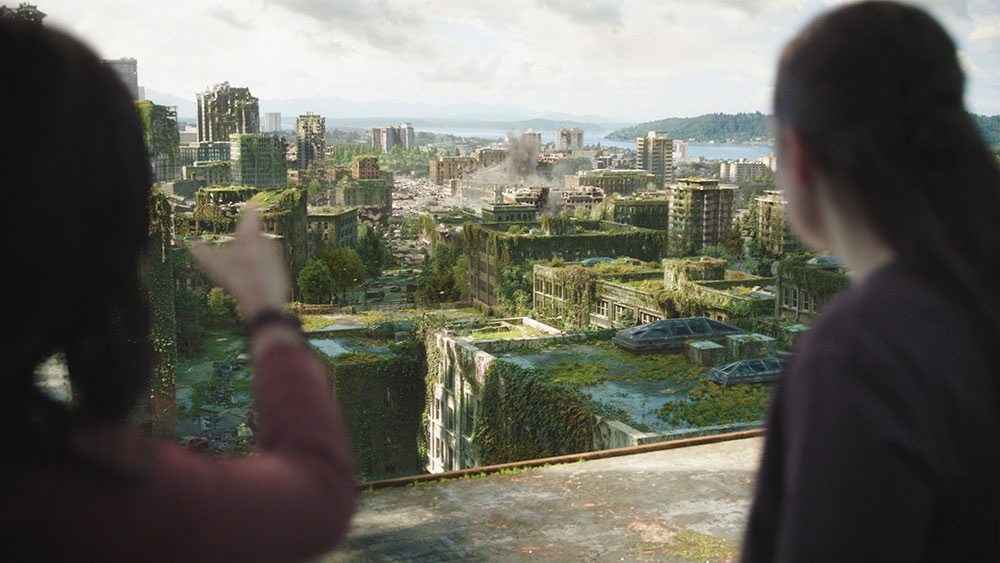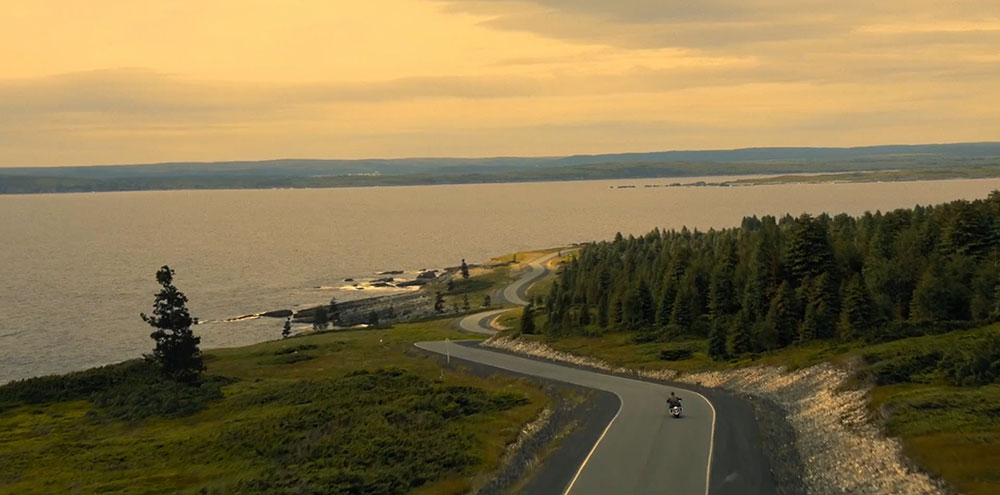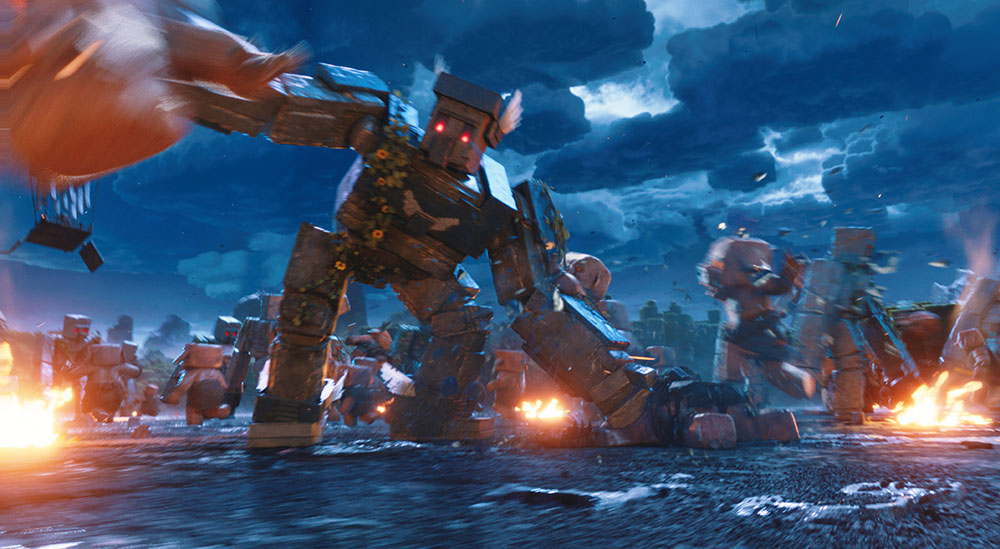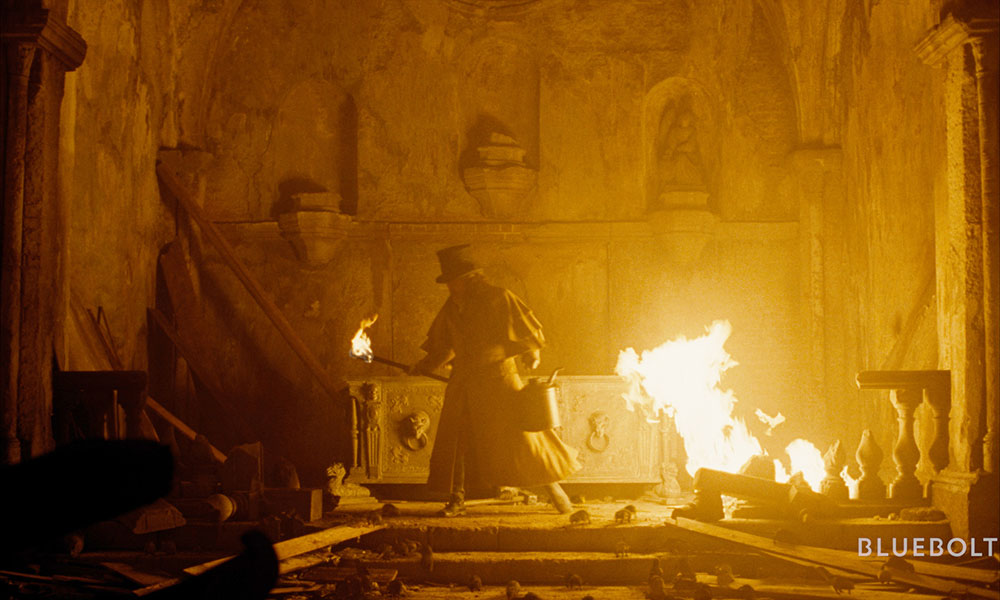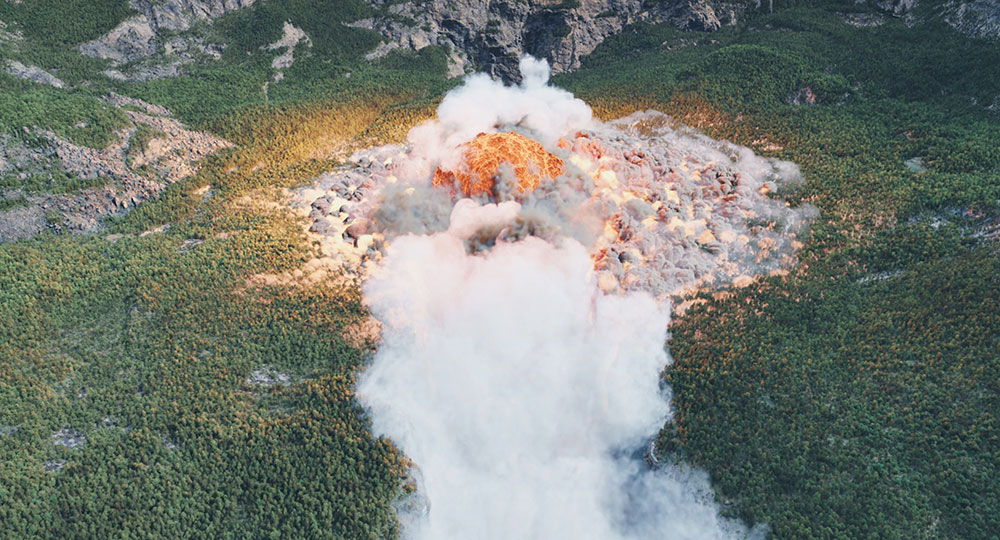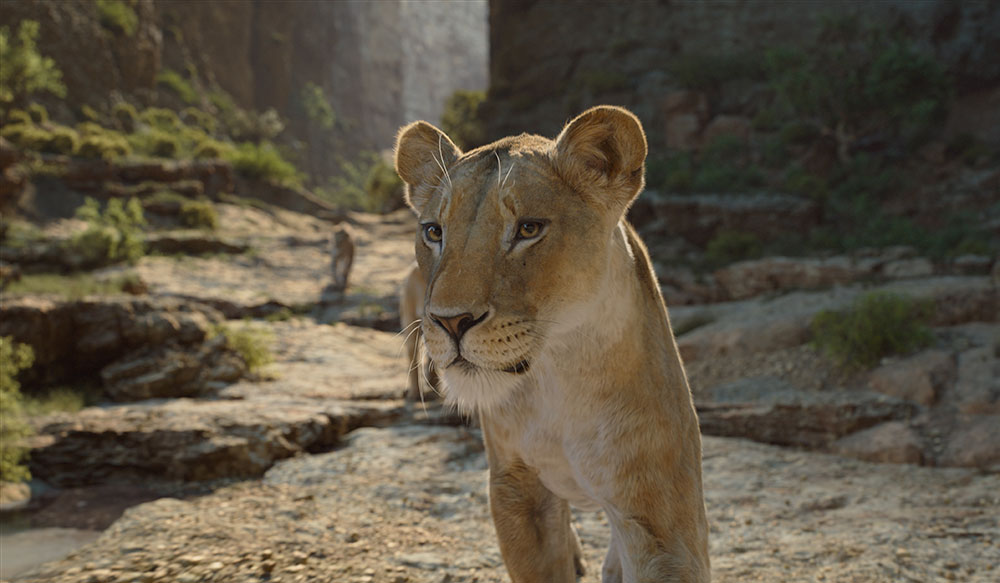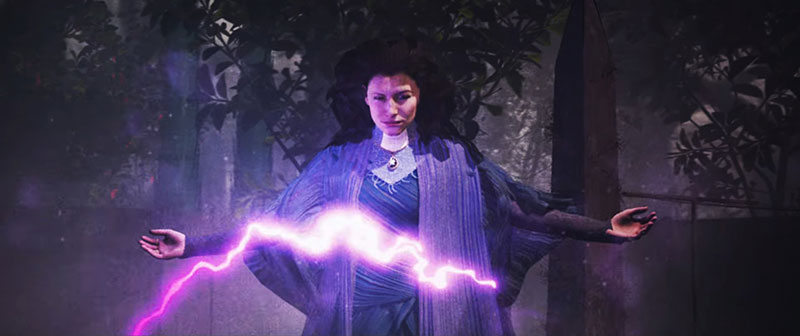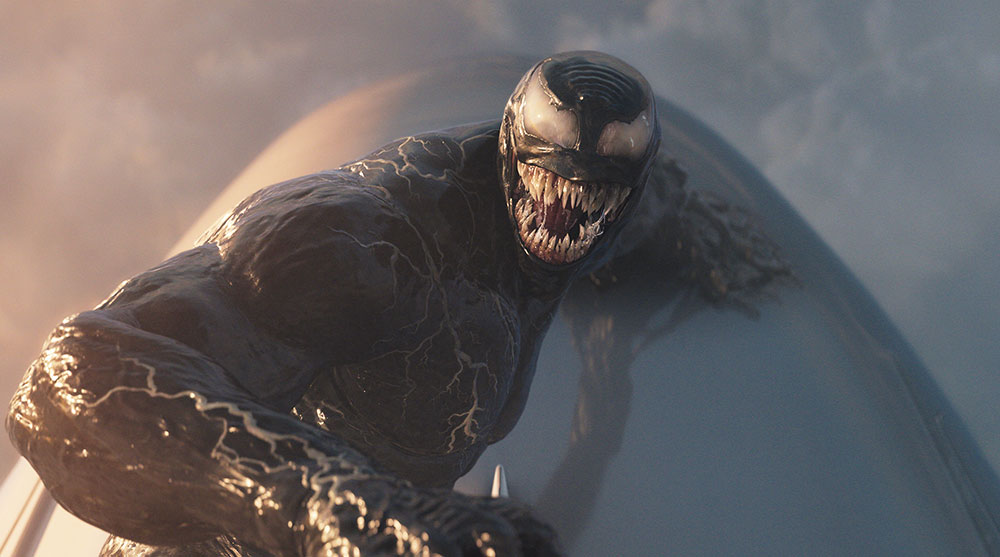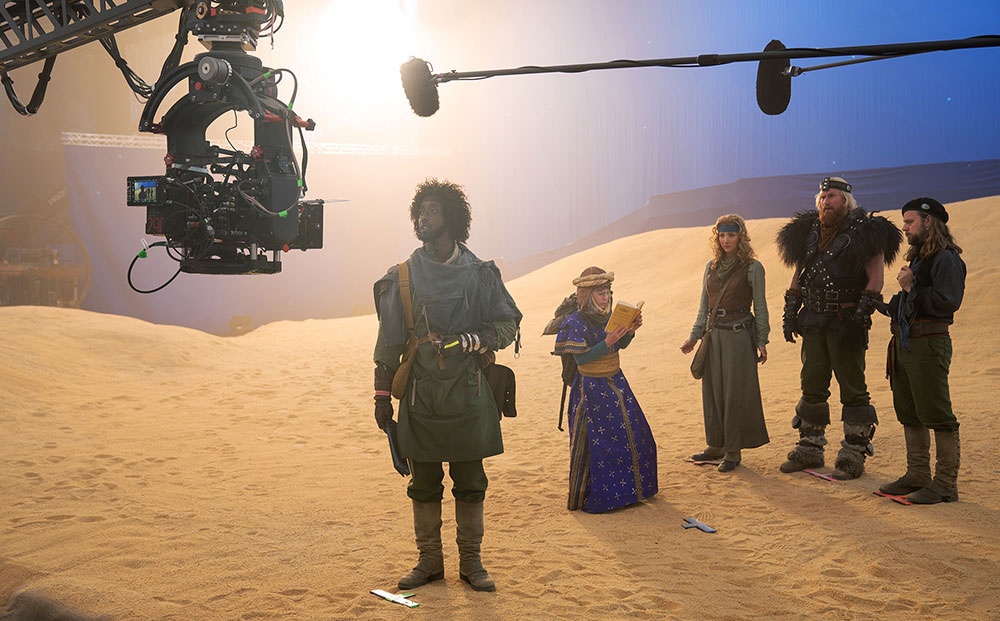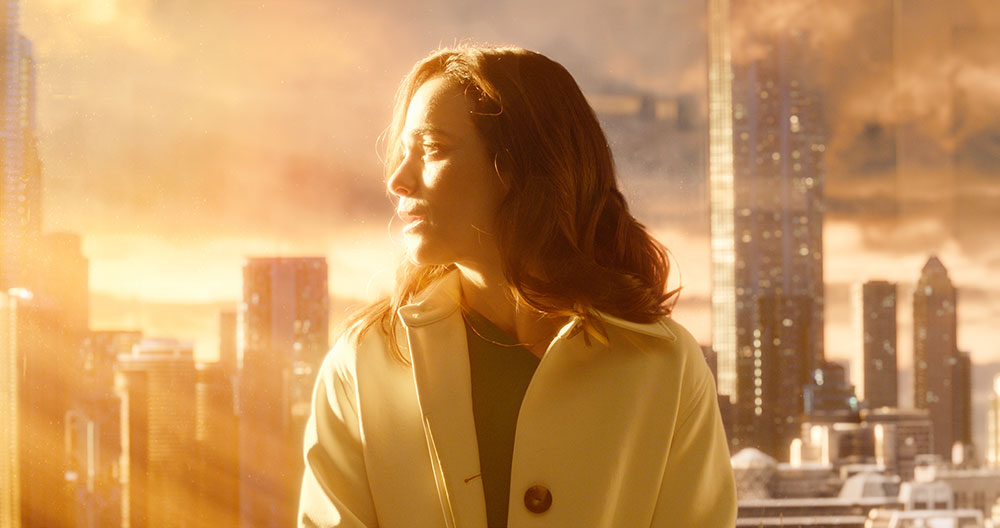MPC’s VFX Supervisor Matt Jacobs and Animation Director Eric Guaglione talk about transforming Sonic to hero status and building new characters and worlds in the Sonic universe.
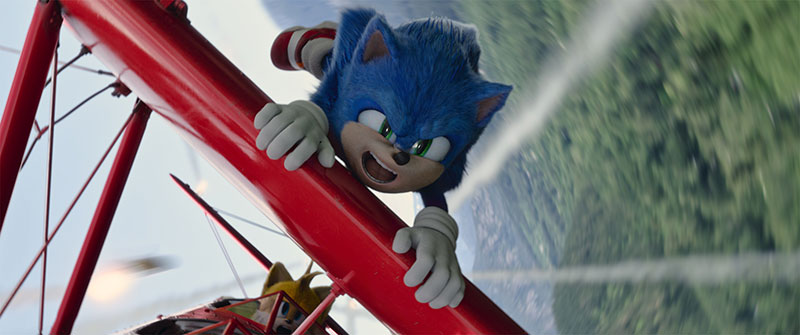
MPC’s VFX Supervisors Matt Jacobs and Etienne Daigle, working with VFX Producer Hayden White, led a global team of 1,300 artists and their support teams to complete over 1,400 shots for ‘Sonic the Hedgehog 2’. After working on the first film and growing familiar with the Sonic universe and Sonic’s character design, all following the original Sonic the Hedgehog video game series, the team was ready for new challenges.
Nevertheless, the project put their powers of character animation, environment-building and explosive FX to the test. On the animation side, MPC’s work focussed on Sonic himself and two new characters, Knuckles and Tails, while on the FX side the team tackled new environments, destruction, fight scenes and mysterious temples. A particular challenge was staying true to the canons of the game and the details fans love, while building out the larger universe and story.
The director Jeff Fowler’s influence on the project was unusual and very strong. His background in animation meant the performance aspects of the work were especially important to him and, after directing the first film as well, he was deeply committed to the story, to Sonic and to the other characters.
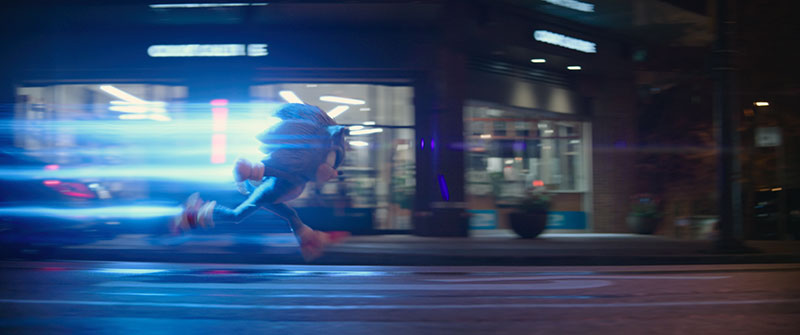
He wanted to continue to build on Sonic's world by introducing other characters from the game. VFX Supervisor Matt Jacobs said, “Eric Guaglione, MPC’s Animation Director on the show did a wonderful job of taking Jeff’s direction and guiding the team of animators to produce the amazing performances and blistering speeds you see throughout the movie.”
Transformed Hero
“The story revolves around Sonic's relationship with the new characters Tails and Knuckles, who are well-known characters from the game, as they quest to find the master and chaos emeralds,” Eric said. “The quest draws deeply from the game's storyline and action. Because Jeff was very keen to stay true to the game's canon and what fans have come to know and love about Sonic, the characters and the story, each character design needed to reflect the game but stand on its own as film versions.
“For this film, fans watch as the transformation of Sonic's character to Super Sonic unfolds. Apart from a golden colour and glow, this was primarily achieved through the acting performance, where we portrayed a mighty and quite serious side of Sonic not seen before. His trademark blue electric bolts and trails were keyframe animated tubes extending behind Sonic, which were then rendered and heavily tweaked in compositing.”
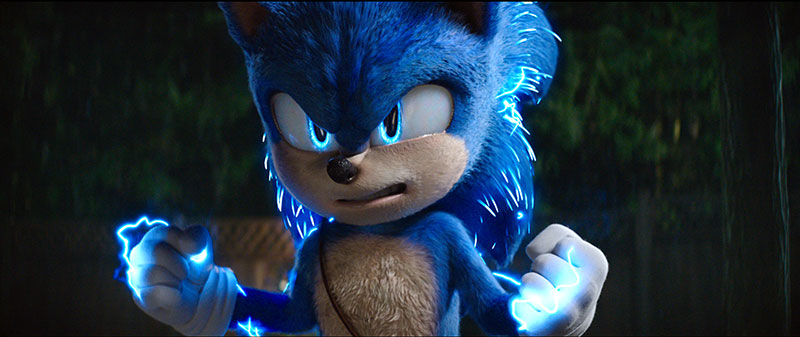
Matt noted that Sonic is traditionally depicted in two dimensions. “When we animated or rendered him in 3D, specific poses or lenses on the camera would need adjustment to maintain the canons established in the game or comics,” he said. “We received great feedback from Tyson Hesse, an artist from the Sonic the Hedgehog comic series who was working as a character design lead and storyboard supervisor for the movie, that helped guide those Sonic-specific look issues. Tyson knows Sonic better than anybody and would help with draw-overs to guide poses and expressions, making our animations look like the characters the fans love.”
The extreme-speed sequences are key to the story, as Sonic’s main way of overcoming his rivals, but as Eric described, extreme speed can be pretty tricky to stage. He said, “In some cases, the speed registers best by allowing the character to pass through the frame, but that makes it impossible to track the character as Sonic emotes, which is why at other times, these shots must be staged with an equally high-speed travelling camera. These different types of scenarios were considered early on during the previs stage.”
Knuckles and Tails
Knuckles and Tails already had complete backstories from the game. To design, build and animate them for the movie, the team worked in collaboration with the MPC Character Lab, employing the same animation design language they were using for Sonic and applying what they had learned from the first movie. The director and Tyson Hesse supplied us with detailed guidance on each character's unique qualities, such as Tails' dual tails.
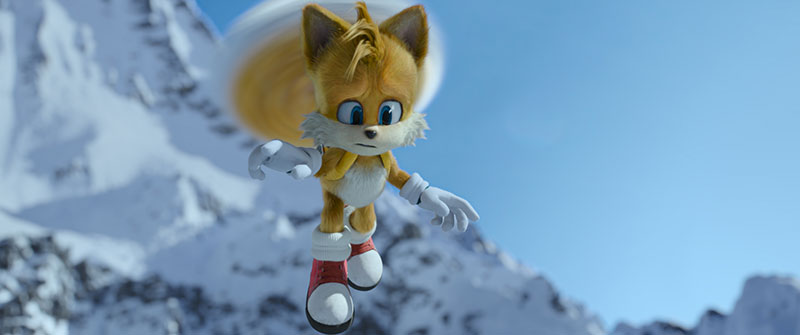
“We spent many hours working out the look and feel of those tails while flying, walking and running – everything we might encounter in the story. The same goes for signature facial expressions and eyes, characters' posture, and how Knuckles uses his fists – always with a nod to the source material, the Sonic games.”
On one hand, Sonic, Tails and Knuckles are small, furry and cute, but they are also destructive and violent. Reconciling this range of traits into engaging, consistent characters for viewers was interesting and funny. “We had to laugh. We’d think ‘Oh look how cute Tails is.…’ – right before he whips out weapons and pummels his enemies. But that’s what makes these characters so rich – they do unexpected and surprising things, but when you justify characters’ behaviour through their inner emotions, it becomes authentic. This is something that Jeff had a solid grasp of.”
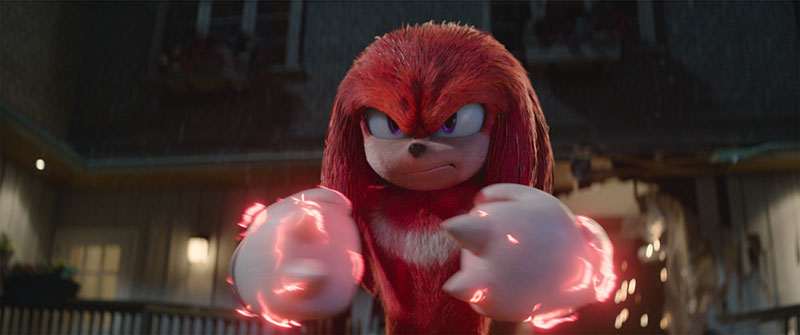
Character Commitment
Working on a film with director whose commitment to the characters was as deep as Jeff’s was a special experience for the MPC animation team. “While we did have the first film to refer to, Jeff made it clear that this was an evolved Sonic,” said Eric. “He was a naïve kid in the first film – in the second, Sonic was a coming-of-age character craving independence. We did little to refer to the first film other than capturing the essence of his facial expressions. We also played up as many nods to the games as possible. For instance, when Sonic and Tails danced in the Siberian tavern, we made sure to strike classic poses that true fans would recognise.” Many such moments occur throughout the film.
Working with a film director who was previously an animator is also rare – and in this case was a blessing. He understood how acting choices, staging and timing, can make or break a sequence, and knew how to read scenes through every rough stage of a shot’s creation. Eric said, “Our process mimicked that of animated feature films I’ve supervised – whenever possible, we acted out all the shots and used other references to craft a performance before the animated performances were ever started. In many cases, we showed Jeff references so that he could select a direction to take.”
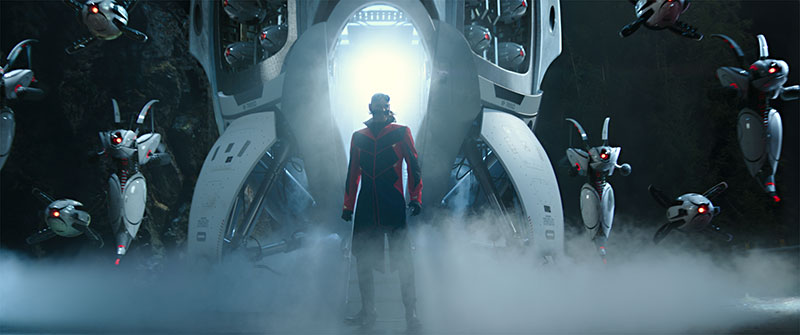

Furthermore, there was never a moment when he couldn’t tell the team exactly how these characters would respond to a situation. “I wouldn’t be surprised if he doesn’t dream in Sonic!” Eric commented. “I was seeking to create sincere, authentic performances for these characters, so I asked a lot of questions – and I mean, a LOT of questions – which Jeff was always more than happy to answer.”
The production was on a tight animation schedule, leaving little room for error. Jeff’s ability to be clear and concise helped tremendously. “We tried showing as much in context – that is, as story beats – as possible so that Jeff could read how the performances were evolving, or playing out while delivering a joke,” said Eric. every day, we would spend anywhere from 2 to 4 hours together, reviewing animation. A schedule like that certainly gets you into the head of the director.”
Robotnik’s Robot
The team worked on several different sequences and the specific, custom looks that define the story. Towards the end of the movie, Dr. Robotnik uses his powers to destroy his surrounding environment to create a giant Death Egg Robot resembling himself, and attack Sonic. It became another significant challenge for the team, who worked again in collaboration with MPC’s Character Lab.
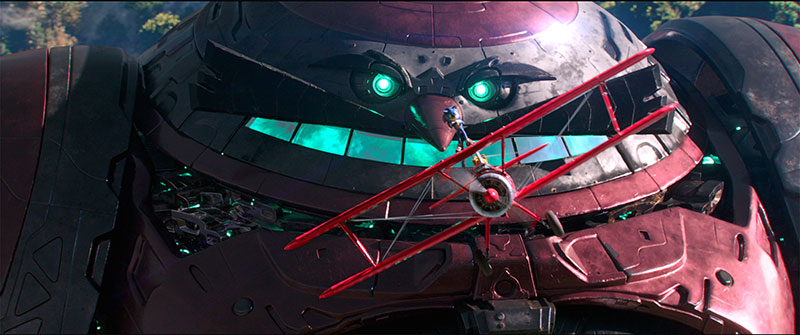
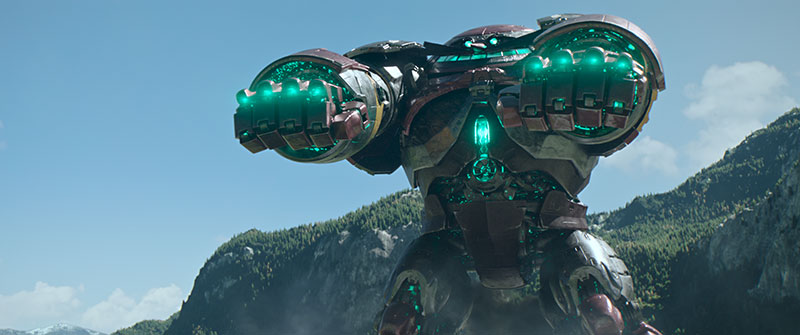
They referenced the original video-game designs as a base, but needed to stylise and animate the robot to function in real-world photography. “Robotnik’s Death Egg was an incredible challenge to animate. We wanted to embody the nature of Jim Carrey’s performance, which was a fantastic resource,” Eric said. “Let’s face it, Jim Carrey is a human animated character. He’s hilarious – his body language is hilarious, from start to finish. The main issue was knowing when to tone down the silliness and get the serious, threatening robot to emerge. Jeff guided us every step of the way.”
New Worlds
As well as developing memorable, believable, unique characters for this movie, MPC was responsible for figuring out how to craft multiple environments and FX. VFX Supervisor Matt Jacobs talked about working on the Owl Temple and Emerald Chamber. “Our Environments team had several huge tasks on their hands, but these were the two environments that relied most heavily on taking concept art and turning it into our sets,” he said. “Since we had less to draw on from direct scans and photographs, we took a much more research-based approach.
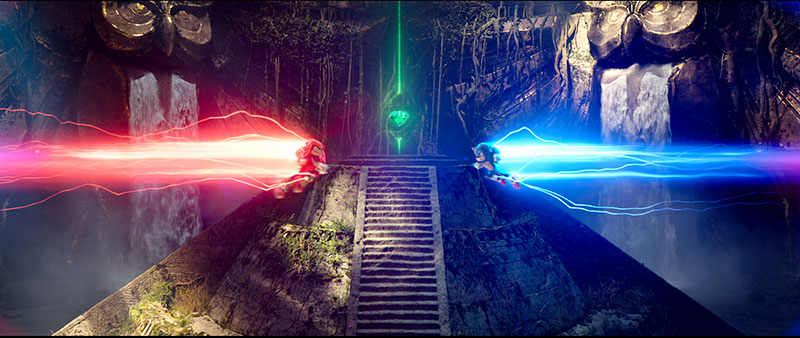
“The Owl Temple and Emerald Chamber, which are both vast interior spaces, started with powerful concept art, but as usual, it was essential to ground the internal elements in reality, including lighting and material design. In both cases, we needed to create a sense of awe for the audience, which came down to adding the right details, ranging from vegetation to thousand-year-old ice formations that had formed on these sacred spaces, covered with glyphs, statuary and motifs from the Sonic canon.”
Siberian Snow
The snowboard chase in the mountains of Siberia features photoreal environments that did have more direct reference for the artists to base their work on. When looking at the result, it can be hard to work out where ‘real’ ends and the digital work begins. Matt said, “Ged Wright, the production VFX Supervisor, carried out an extensive Lidar, photographic and film survey of several mountains in Canada. Those mountains became the basis for the mountain chase look and environment.
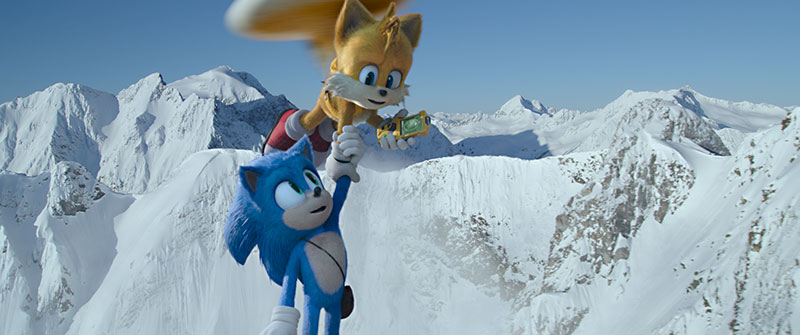
“We found that scaling down the Lidar scans by two-thirds gave the terrain more interesting detail in relation to the characters and the action in that sequence. As with anything in VFX, having excellent references is paramount to the final look the artists strive to achieve or match. We used the footage Ged shot for sun, shadow lighting looks, and the characteristics of the distant mountains and trees.”
Build It Up, Break It Apart
There’s no escaping the fact that destruction is a major element of the action and humour in this movie. “It seems that everywhere Sonic goes, something gets destroyed – usually an entire set. As fast as the environments team could build it, the FX department would break it apart, blow it up or flood it,” said Matt. “While the show put a lot on the FX team’s shoulders, nevertheless, lot more than just environmental destruction went into this film.
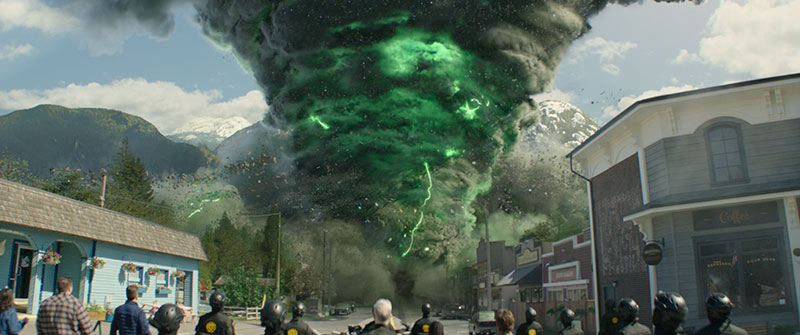
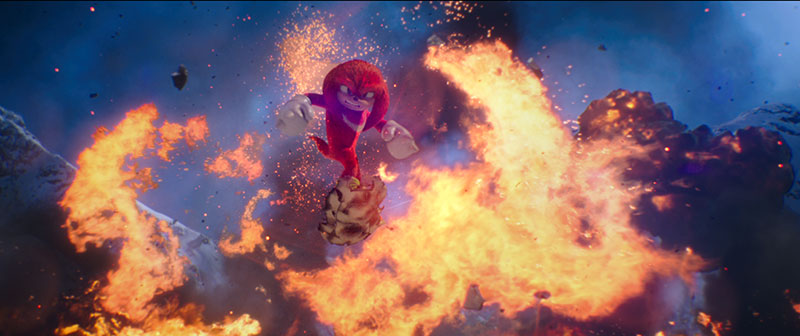
“A myriad of interactives had to play in the scenes that the FX team created elements for. When Sonic gets wet or has debris stuck to his fur, the FX team would be the ones designing those effects. When the wind blows through the fur or there is an interaction between the characters and a prop, our Tech Anim team would work out the fur simulations.”
The greatest challenge to the VFX team was just how visually ambitious the film was as whole. The main characters that carry the story are CG and they take the audience on an incredible journey. Sonic 2 is a wild ride for anyone watching, according to Matt, who said, “With all that work behind-the-scenes, it was also a bit of a wild ride to make it come together. I think that for everyone making the film and viewers alike, Sonic 2 has been a terrifically engaging experience.” www.mpcfilm.com
